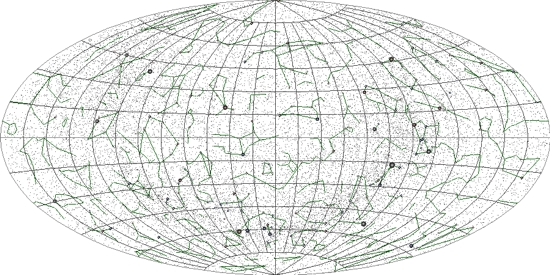DISC-SkyMap: Indexing Astronomical Objects

PROBLEM
When astronomers analyze telescope images, they need to match newly observed celestial objects to catalogs, which is essential for identifying previously unseen objects, such as asteroids and supernovae, and for detecting objects that change over time. Since an object position in an image may be distorted by atmospheric fluctuations and optics imperfections, the procedure must identify not only exact but also close approximate matches. Specifically, it must allow distortions up to 1 arcsecond, that is, 1/3600 of a degree.
RESULTS
We represent the position of a celestial object by two equatorial coordinates: declination, analogous to latitude; and right ascension, analogous to longitude. The indexing procedure divides catalog objects into buckets by declination and then sorts objects within each bucket by right ascension. When retrieving a match for a newly observed object, it identifies the two closest buckets, finds potential matches within these buckets using the sorted order, and chooses the best match among them.
When astronomers analyze a new telescope image of the sky, they can invoke the matching procedure to process all objects from the image at once, which makes the retrieval especially fast. Since the image covers a small sky region, the system loads the related part of the indexing structure into memory, and then performs the matching without accessing the disk.
More details: Summary of the algorithms and empirical results
CHALLENGES
We are working on a distributed version of the matching procedure, which will process multiple images in parallel. We are also developing techniques for detecting more distance approximate matches, which will be able to match objects that move up to 100 arc-seconds from image to image. These techniques will allow tracking objects that slowly move through the sky, such as distant asteroids. A longer-term challenge is to integrate the technique with other methods for distributed indexing of massive astronomical and cosmological databases, such as the use of kd-trees and Morton codes.
PEOPLE
FACULTY
Eugene Fink
Garth Gibson
Julio López
GRADUATE STUDENTS
Bin Fu
EXTERNAL COLLABORATORS
Joel Welling (Pittsburgh Supercomputing Center)
Michael Wood-Vasey (Physics and Astronomy, University of Pittsburgh)